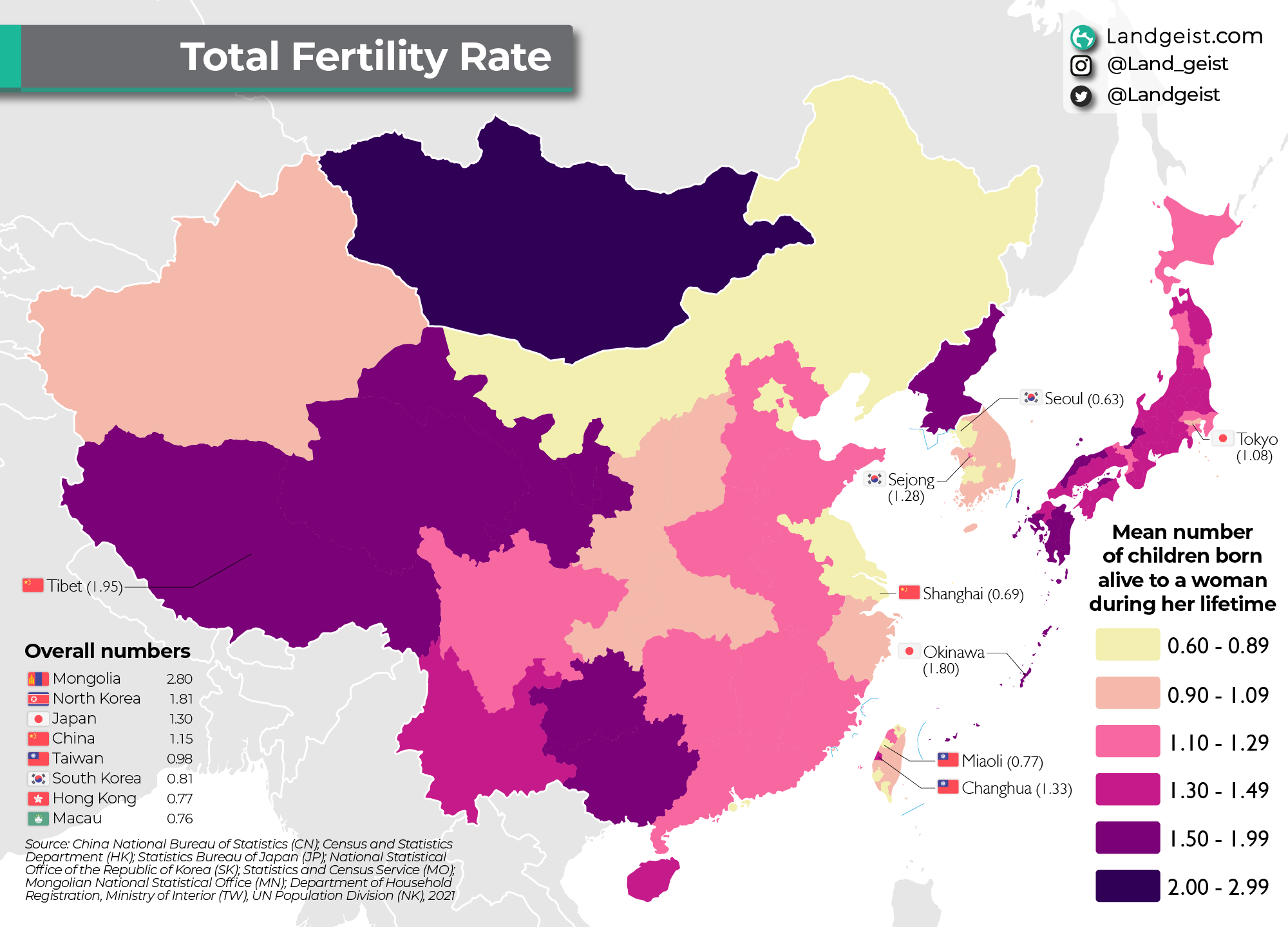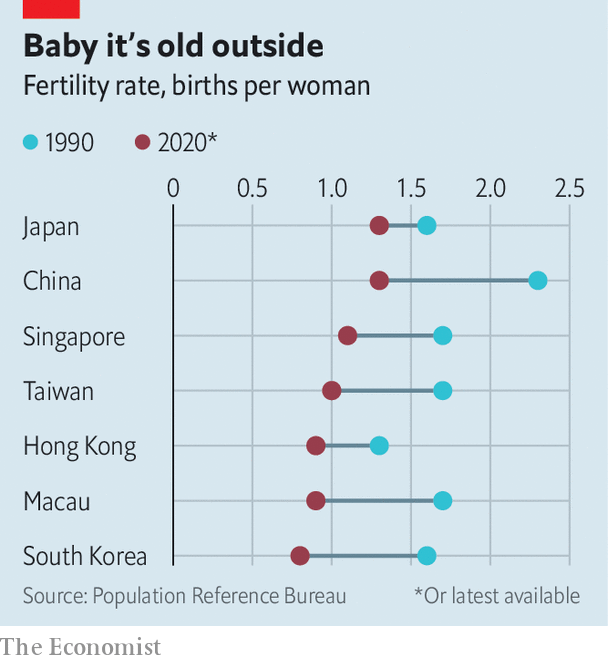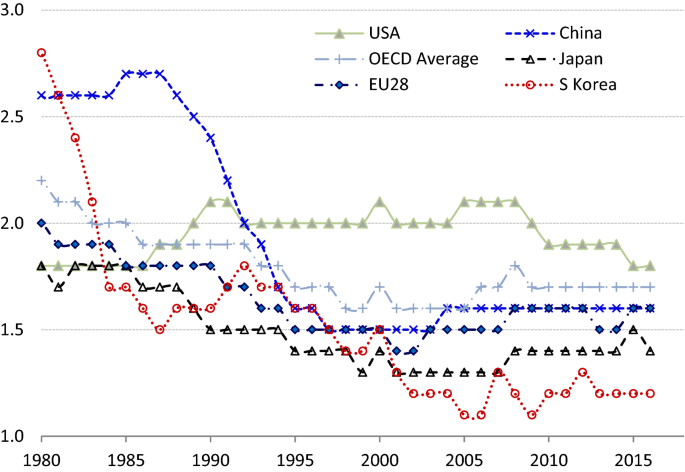Why Are East Asia Birth Rates So Insanely Low?
Why Are East Asia Birth Rates So Insanely Low?

Let’s get straight to the point: East Asia is facing a birth rate crisis. Countries like Japan, South Korea, and China, once known for their rapid growth, are now grappling with birth rates that are historically low. This isn’t just a regional issue; it has far-reaching implications for the global economy and society. So, what exactly is happening? Why are so many East Asian nations struggling to maintain their populations?
The Problem: A Region Facing Population Decline

It’s hard to overstate the gravity of the situation. In South Korea, the fertility rate dropped to just 0.78 in 2022, making it one of the lowest in the world. Japan and China aren’t far behind, both recording some of the lowest fertility rates ever seen in their histories.
A fertility rate of 2.1 is considered the “replacement rate,” meaning that each couple is having enough children to replace themselves. Anything lower than that, and a country’s population starts shrinking. In East Asia, most countries are falling far below this threshold.
What’s driving these declining birth rates?
The reasons are complex, and they’re deeply tied to economic pressures, changing societal values, and government policies that haven’t caught up with modern realities. Let’s explore.
1. High Cost of Living and Economic Pressure

One of the most significant factors contributing to low birth rates in East Asia is the skyrocketing cost of living. Whether it’s housing, education, or healthcare, the financial burden of raising a child is staggering in countries like South Korea, Japan, and China.
Housing Costs:
In cities like Seoul, Tokyo, and Beijing, housing prices are astronomically high, leaving young people either stuck in small apartments or living with their parents well into adulthood. The idea of raising multiple children in such conditions feels financially overwhelming for many young couples.
Example:
Take South Korea as an example. The average cost of housing in Seoul has risen dramatically in the past decade, making homeownership a near-impossible goal for many young people. Without secure housing, starting a family becomes less and less appealing.
Tip: Governments have attempted to intervene with housing subsidies and financial incentives, but the root issue—an imbalance between wages and cost of living—remains largely unsolved.
2. Work Culture: Long Hours and Job Insecurity
Another key factor driving down birth rates in East Asia is the region’s notoriously demanding work culture. In places like Japan and South Korea, employees often work long hours with little time for personal life, making it difficult to even think about starting a family.
Example:
In Japan, the term “karoshi” (death by overwork) has become a widely recognized phenomenon. Many workers are so consumed by their jobs that they have neither the time nor the energy to raise children.
Why It Matters:
This high-pressure work environment leaves little room for work-life balance. Many couples feel that having children would require one parent (usually the mother) to step back from their career, something not all are willing or able to do.
Tip: Some companies have started offering better parental leave and flexible working arrangements, but cultural attitudes towards work-life balance are slow to change.
3. Gender Inequality and Societal Expectations
One of the most overlooked aspects of East Asia’s low birth rates is the persistent gender inequality and societal expectations placed on women.
Example:
In South Korea and Japan, women are often expected to shoulder the majority of household responsibilities, even when they work full-time. This double burden makes the prospect of raising children even more daunting.
The Cultural Challenge:
Women in these societies face a dilemma: pursue a career or have children. Many feel they can’t do both, especially in cultures where support systems like affordable childcare or paternity leave are lacking.
Tip: Governments are trying to address this through policies like paternity leave and subsidized childcare, but societal norms are deeply ingrained and slow to change. Until gender roles become more equal, many women will continue to delay or avoid having children.
4. Changing Attitudes Toward Marriage and Family
In East Asia, the idea of marriage and family is undergoing a massive transformation. Younger generations are redefining what it means to live a fulfilling life, and for many, this doesn’t necessarily include getting married or having children.
Why This Is Happening:
- Individualism: Younger people in Japan, South Korea, and China are prioritizing personal freedom and career goals over traditional family structures.
- Delayed Marriage: More people are choosing to marry later in life, if at all. In South Korea, the average age of marriage has steadily increased, and as a result, women are having fewer children, or none at all.
Example:
In Japan, a growing number of people are choosing to remain single. The phenomenon, often referred to as the “celibacy syndrome,” highlights a cultural shift where many prefer to focus on their careers, hobbies, or personal interests rather than starting a family.
Tip: Governments are aware of these shifting attitudes and are working on campaigns to promote marriage and family life, but changing deep-rooted cultural trends takes time.
5. The Impact of Education and Career Expectations
The pursuit of education and careers is another significant factor contributing to low birth rates. In countries like South Korea and Japan, there is enormous pressure to excel academically and professionally. This pressure often pushes young people to delay major life decisions like marriage and children.
Example:
South Korea has one of the most competitive education systems in the world, with parents investing heavily in their children’s success. The intense focus on academics means that young adults are often encouraged to prioritize education and career over family life.
How This Affects Birth Rates:
The more time people spend focusing on their education and careers, the later they marry and start families. By the time they feel ready, many decide to have fewer children or none at all.
Tip: Some countries, like Japan, are attempting to create more flexible work environments and promote work-life balance, but it’s a slow process that hasn’t significantly impacted birth rates yet.
Climax: What Happens If Birth Rates Don’t Increase?
The consequences of low birth rates extend far beyond individual families—they’re a demographic crisis that can impact entire economies. With fewer children being born, East Asia is headed towards an aging population, meaning there will be fewer working-age adults to support the growing number of elderly citizens.
Economic Impact:
An aging population creates a burden on healthcare systems, pension funds, and social services. Without a younger generation to support the economy, countries may face severe financial challenges, including labor shortages and a decline in productivity.
Example:
Japan is already experiencing these effects. With one of the world’s highest proportions of elderly citizens, Japan’s government has had to direct more and more resources toward elderly care, leaving less room for investments in other areas.
Tip: Governments across East Asia are launching financial incentives like cash bonuses and subsidies to encourage families to have more children, but these policies have so far failed to make a significant impact.
Conclusion: A Problem Without a Simple Solution
The reasons behind East Asia’s insanely low birth rates are multifaceted, involving economic pressures, cultural shifts, and gender inequality. While governments are trying to reverse the trend through financial incentives and policy changes, the reality is that solving this issue requires long-term societal shifts that can’t be fixed overnight.
From addressing work culture to promoting gender equality, the solutions will need to be as complex and diverse as the challenges themselves. The question remains: Will these efforts be enough to prevent a demographic crisis, or is East Asia destined to face an uncertain future with shrinking populations?
Want to dive deeper into global demographic trends? Subscribe for more insights and analysis on key social issues.
comments powered by Disqus